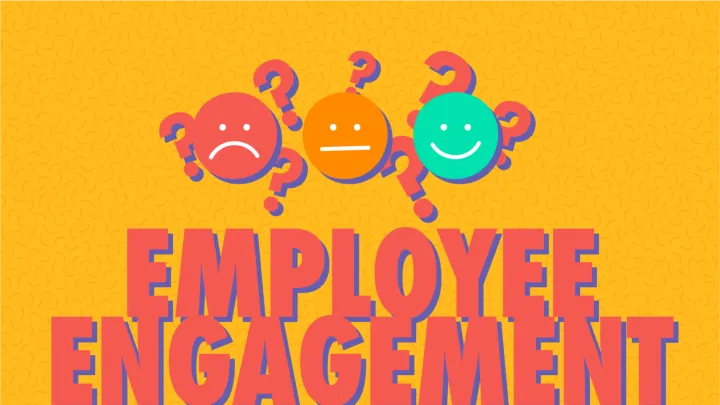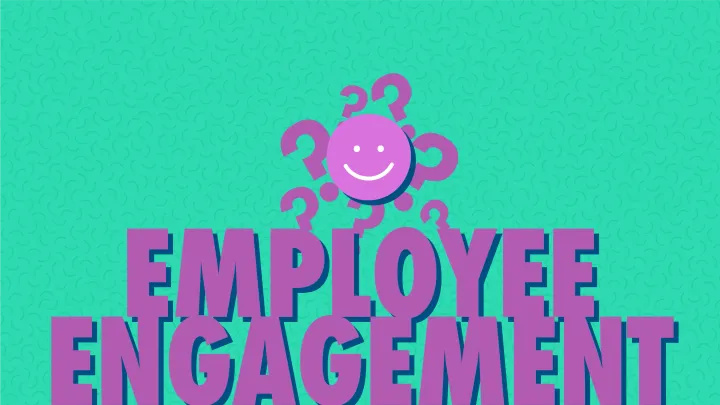How to interpret employee engagement survey results
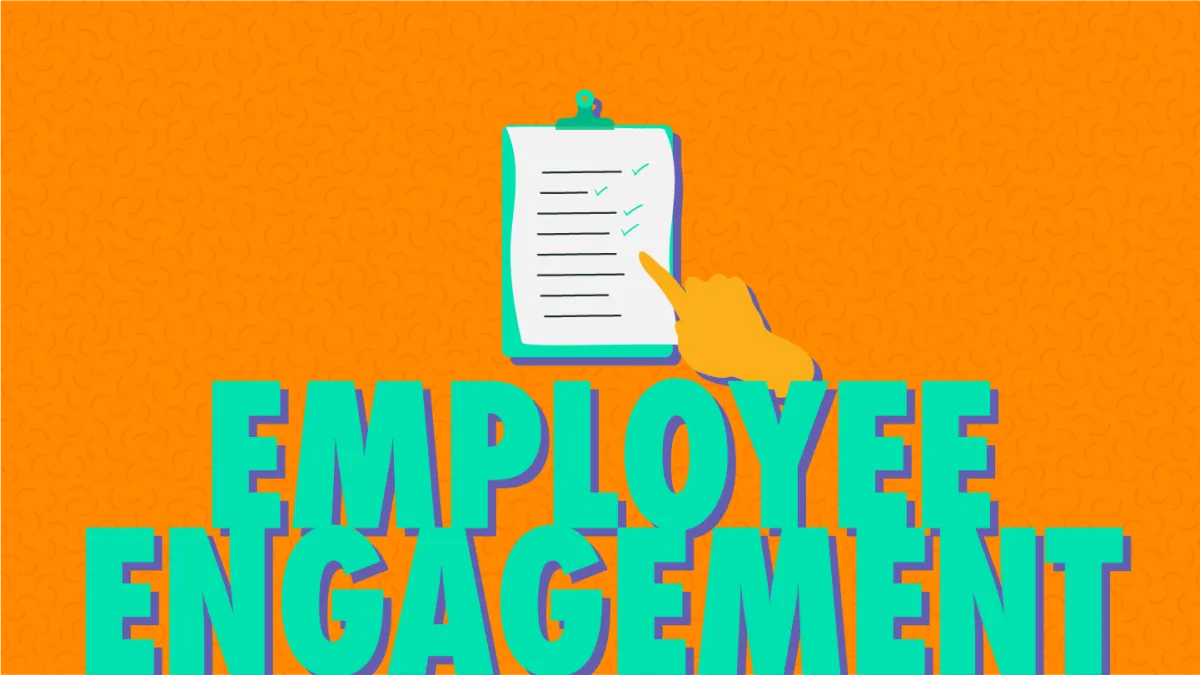
Everyone in HR knows they should run employee engagement surveys, but many struggle to know what to do with them afterwards. And if you don’t do anything with your engagement survey results, there’s not much point in doing the surveys in the first place.
In fact, running an employee engagement survey and doing nothing on the other side of it is likely to do your business more harm than good.
So what should you be doing with your employee engagement survey results?
As one of Charlie’s HR advisors, I help small businesses improve their employee retention and engagement by tackling turnover and dissatisfaction. Part of this involves sharing best practices for responding to employee engagement survey results, so that their HR teams know just how to interpret them.
When you know how to interpret employee engagement survey results, you avoid it becoming a tick-box exercise for both you and your team. And knowing what to do with your employee engagement survey results will show your employees that you genuinely want to listen and act on their feedback — which really is the most important part of the whole exercise.
How to interpret employee engagement survey results
Many people make the mistake of thinking of the employee engagement survey as the end result, when in actual fact it’s just the first step — there’s still a lot of work to do once you get the results back.
But don’t let that overwhelm you, because that work can be broken down into three simple steps:
- Analyse the survey results
- Communicate the survey results
- Act on the survey results
A lot about interpreting, sharing, and responding to employee engagement survey results is common sense, but in the busy world of small business having some simple steps to follow means you won’t accidentally miss something important.
Let’s look at why we need to do this, before getting into the nitty gritty of how.
Why is it important to analyse employee engagement survey results?
Analysis often gets missed in many aspects of work. We make space for the doing, but often forget to set aside the time for reviewing what we’ve done. But analysing the results of your employee engagement survey has to be the first step. This is because:
- You can look for trends - both good and bad
- You can spot inconsistencies - is one team having a different experience to another, for example?
- You can start to understand what you want to do next, and why
Why is it important to communicate employee engagement survey results?
Before, during, and after an employee engagement survey, it’s vital to communicate with your team.
- You want your employees to feel appreciated
- You also want them to feel informed
- You want everyone to understand what the survey’s for, and why it’s worth their time
Any employee engagement survey needs to feel meaningful and worthwhile, so set the scene as early as you can so that your team understands that their feedback matters, and that you plan to do something with it.
The survey’s about them, after all.
Why is it important to act on employee engagement survey results?
We live in a world of data, so the main reason to act on your employee engagement survey results is because you have information. But there are also other reasons:
- To create and nurture a culture of open feedback
- To celebrate the good, and use anything negative to inform positive change, turning engagement into employee enablement
- To avoid your team becoming disillusioned — they want to know that something’s being done in response to what they’ve said.
How to analyse employee engagement survey results
Once you understand why you need to analyse your employee engagement survey results, you need to decide how you’re going to interpret them. This is the most common stumbling block and where a lot of people stall altogether, as they’re not sure how to do it or what exactly they’re looking for.
The good news is that you don’t have to do this analysis on your own — there is employee engagement survey software out there to help you interpret survey results, so that you can prioritise them and decide how to best respond.
All-in-one HR software like Charlie allows you to track:
- Your survey completion rate
- All survey responses (which can be set as anonymous to encourage honest feedback).
If you use Charlie to run your employee engagement surveys, you’ll be able to analyse the survey results clearly and simply from your Charlie dashboard.
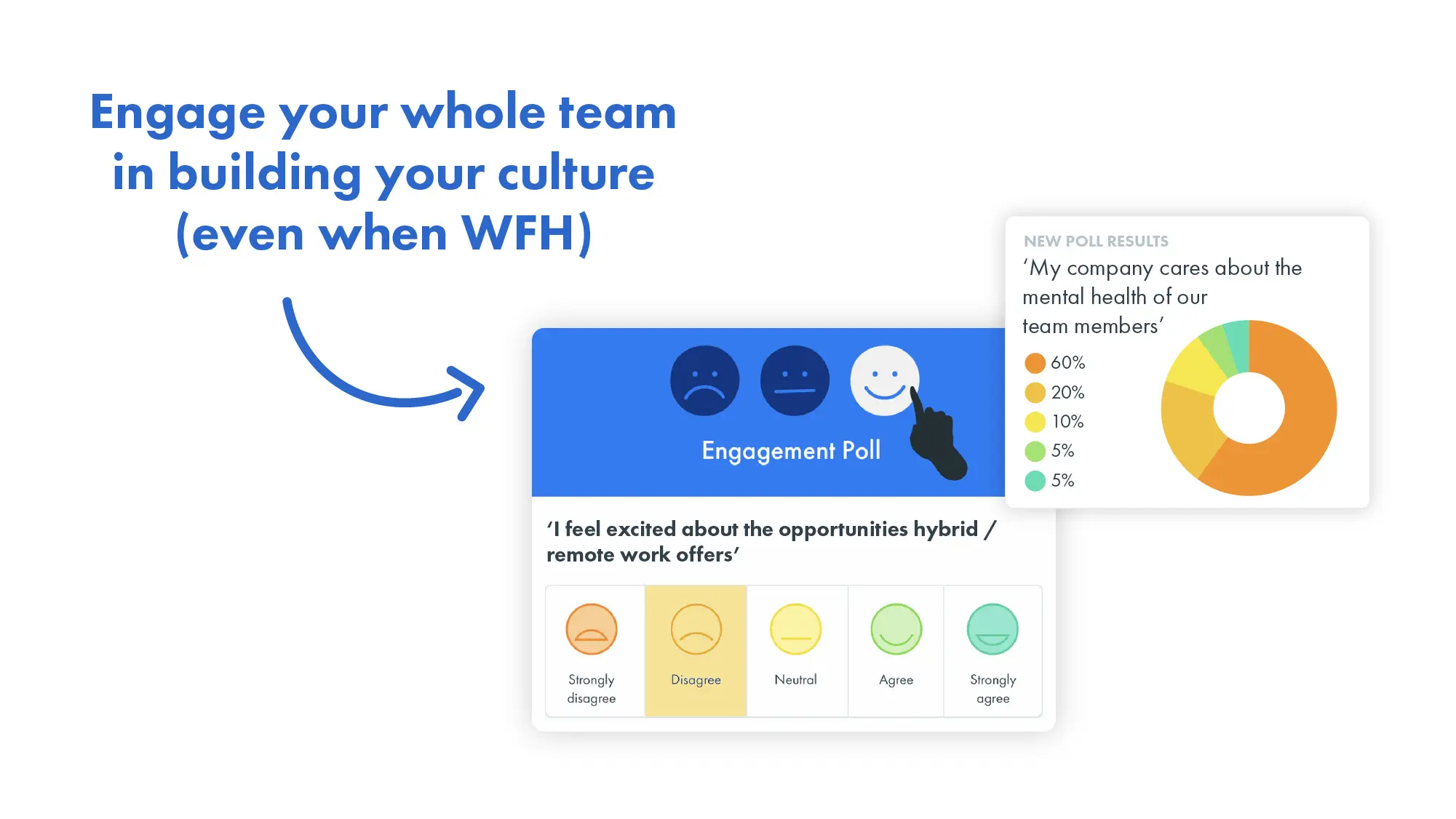
Your dashboard displays a visualisation of the survey responses, so you can see all feedback at a glance. You can also export the full results for use in company communications (more below), presentations or reports.
Over time, you’ll build up a bank of feedback as you run more employee engagement surveys, and access this historic data through Charlie. You can then compare past and recent survey responses to build up a picture of how happy and engaged your team is, and how this has changed over time.
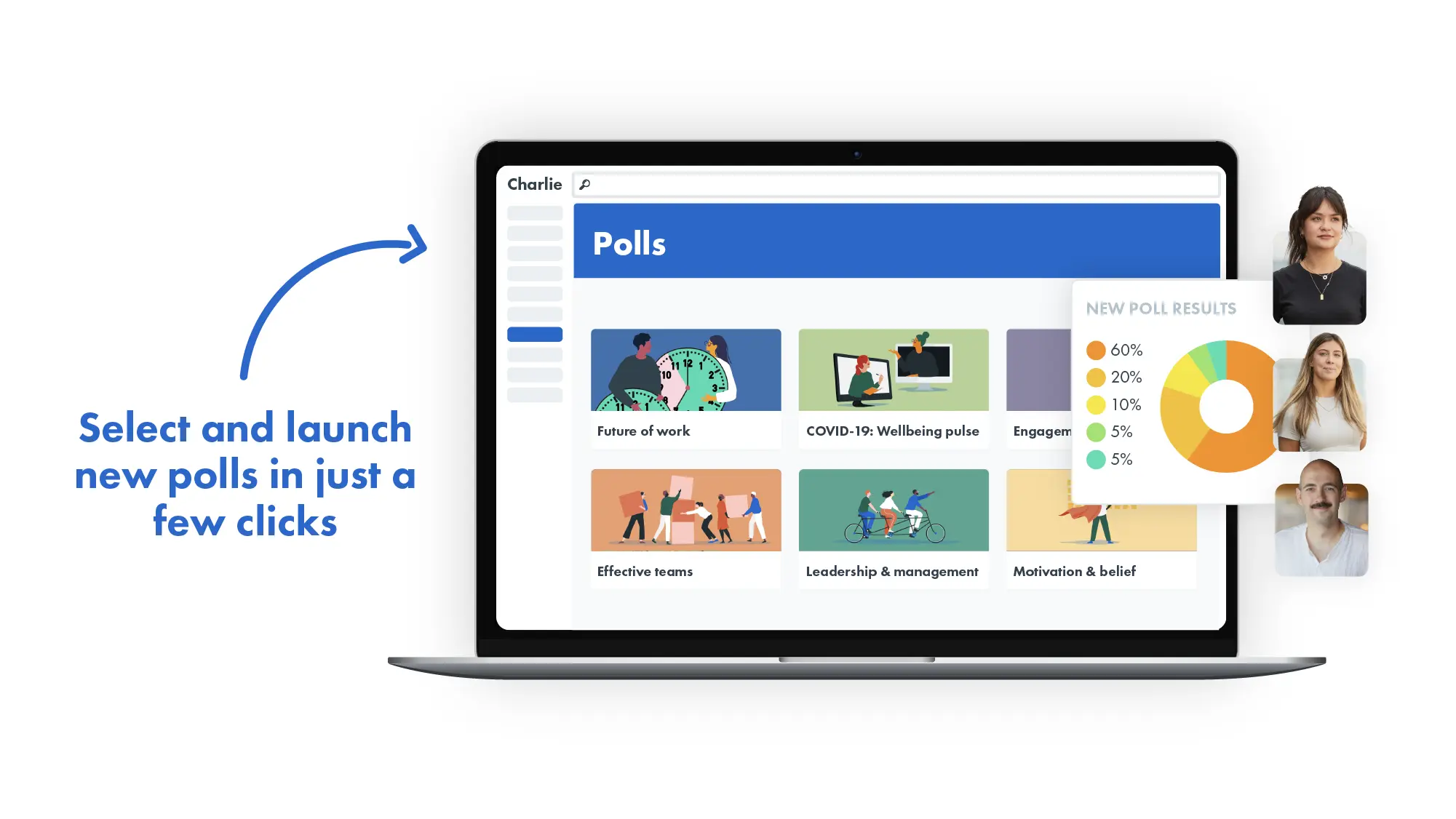
How to communicate employee engagement survey results
Everything in the world of work is improved with good communication, and employee engagement surveys are no different. So plan how you’re going to share the results with the team before you get started.
Communicating your engagement survey results is another thing that can be broken down into three simple steps:
- Thank your team
- Involve your team
- Update your team
Thank them
Common courtesy goes a long way, so thank your team for taking part in the survey, for giving up their time, and for having the courage to share their honest thoughts.
Involve them
As well as providing insight, your team can be part of any solution. If your results indicate there are inconsistencies or feelings of dissatisfaction across the company, then you can involve your team to help tackle them.
For example, if your employees feel you should be doing more around social or environmental issues you could set up a Corporate Social Responsibility (CSR) group with representatives from across the company. Similarly, you could create a Diversity and Inclusion group if your results indicate that this is an area of your business that needs attention.
By involving your team in addressing any issues arising from the surveys, you’ll clearly demonstrate that you’ve taken their feedback onboard and are doing something in response.
Update them
Keep your team in the loop and they’ll be happier for it. Even if you don’t have much to report, a brief update to let them know what’s in progress or still on the agenda is always good for morale.
How to act on employee engagement survey results
Much of the analysis and communication around your employee engagement surveys will result in various actions, but you also need to ensure you implement real change in response to your team’s feedback.
And a lot of this will likely centre on how you run things internally to improve, and then maintain, your levels of employee engagement.
Regularly surveying your employees is essential, for example, as it means your business will continue to grow and develop in response to their feedback. So one key action might involve finding a software solution to help you seek this feedback more effectively and easily, thereby making it ‘business as usual’.
An all-in-one HR tool like Charlie automates employee engagement surveys, so that you’re able to send them out regularly and consistently. Charlie will even automatically remind your team if they’ve not responded, saving you time and faff.
And with the information supplied to you by your team, you can then go on to create employee engagement reports and employee engagement survey results presentations or action plans.
Charlie’s free for 7 days, so why not get started today?

If you'd like to browse more resources on engagement surveys, you may find these useful:

